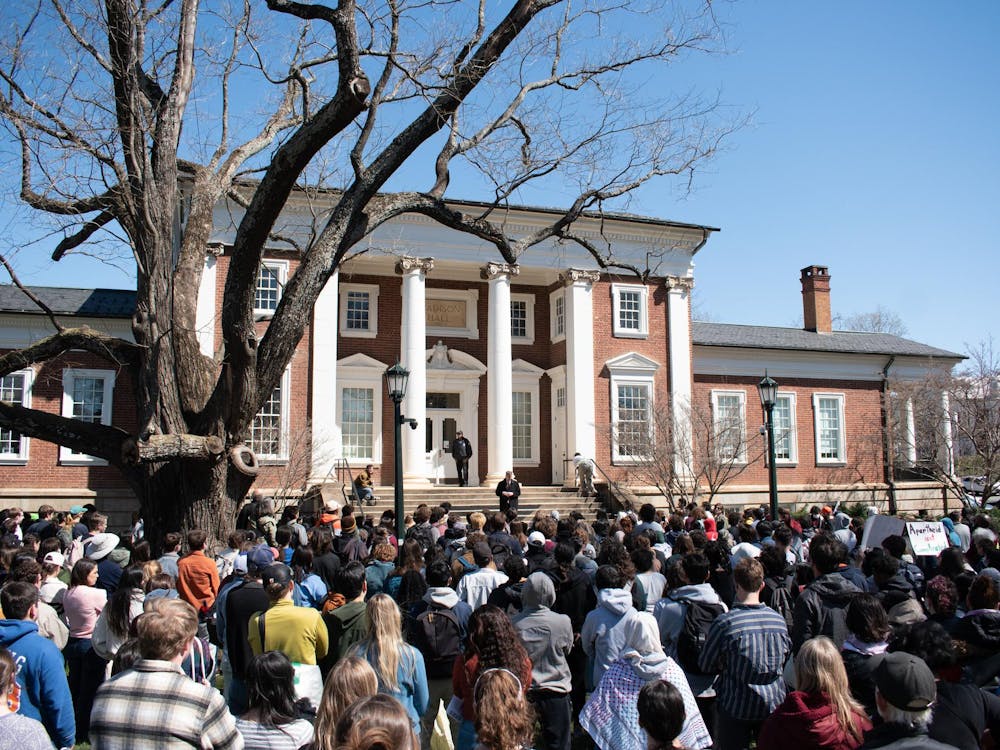Student self-governance is undoubtedly making a comeback. While this editorial board previously raised concerns over the efficacy of student self-governance at the University, student leaders have recently addressed many long standing issues that plagued student self-governance organizations. The University Judiciary Committee has dramatically cut its case processing time. The Student Council passed a more fiscally responsible budget for the 2024-25 academic year. And the Honor Committee is fleshing out the multi-sanction system that we, as self-governing students, voted in. These recent steps underscore admirable work on the part of many leaders within our community. And they also highlight a broadly commendable recognition of the transformative power that can be wielded by traditional institutions of student self-governance.
The recent actions taken by self-governing bodies at the University exemplify how one form of student self-governance at the University should work, specifically top-down student self-governance. Under this umbrella, which includes UJC, Student Council and Honor, elected student leaders work to carry out changes for the student body whom they represent. University leadership plays an important role in this changemaking process — they traditionally employ rhetoric which legitimizes the exercise of student self-governance and encourages students to continue using top-down governance organizations to make the University a better place for themselves and their peers. Student leaders deserve praise for the game changing work that they have undertaken in recent months, and University leadership deserves praise for their outward commitment to the top-down form of student self-governance.
However, while the administration has largely supported top-down self-governance, what often has gone both completely unacknowledged and entirely unsupported by the administration is the other form through which student self-governance manifests itself in our community — bottom-up student self-governance. This broader bottom-up self-governance is characterized by student engagement in grassroots movements and groups which mobilize around a certain principle or cause they see as important to the University community.
Student participation in a referendum on divestment last semester is one clear demonstration of bottom-up student self-governance. Additionally, the University Guides Service who, until recently, educated prospective applicants on the history of our University is another bottom-up institution. As another, perhaps more inclusive form of student self-governance, bottom-up institutions inhabit an essential and defining position within the University landscape.
Despite this essential position, recent developments indicate that bottom-up student self-governance has a much more fraught relationship with University leadership than its top-down counterpart. Referendums, broadly speaking, are the epitome of bottom-up governance — students craft, register, campaign and vote on them as a means of having a targeted and direct impact on the entire University community. Yet the spring referendum on whether the University Investment Management Company should divest from companies connected to Israel was hardly discussed by the Board of Visitors. Even though the referendum itself was non-binding, the fact that leadership did not see it as sufficiently important to warrant discussions is deeply concerning. Irrespective of whether one agrees with this specific referendum, the actions of University leadership on this front suggest a broader disregard for referenda as a mechanism of student self-governance.
It is easy to think that the University’s handling of the referendum is just an outlier, but administration’s recent suspension of the University Guide Services further demonstrates a willingness to dismiss the practice of bottom-up student self-governance. As an organization of student volunteers who narrate the story of our University both past and contemporary, the Guide Service represents a bottom-up self-governance institution. By suspending the Guide Service, the administration has undermined the autonomy of this organization, a dangerous precedent which runs counter to the principle of student self-governance. Clearly then, bottom-up student self-governance is not afforded the same level of support — rhetorical or practical — as top-down forms of student governance on Grounds.
The arguments which are used to undermine bottom-up acts of student self-governance often rely on the idea of efficiency. For example, ensuring efficiency was a central part of the University’s rationale for suspending the Guide Service. Similarly, the divestment proposed by the referendum would have been exceptionally inefficient, something which seems to have led to its summary dismissal. It is, however, a dangerous game to rhetorically leverage efficiency such that it becomes a precondition for student self-governance.
By linking the existence of bottom-up student self-governance institutions to efficiency, University leadership sets a dangerous precedent, one which opens the floodgates for questioning the existence of student self-governance writ large. Student self-governance in all of its forms, including Honor, UJC and Student Council, is fundamentally inefficient. We as a community commit ourselves to the practice of empowering students not because it is particularly efficient, but because it provides a unique educational autonomy which equips students with the tools to boldly engage the world's problems.
University President Jim Ryan has declared that it is his job to create an environment in which student self-governance can thrive. But what the University administration has failed to appreciate is that both bottom-up and top-down student self-governance are crucial to the mission of the University. For years, the University has prioritized a form of student self-governance which is ultimately inaccessible — top-down governance — and in doing so, has thoroughly neglected the radically accessible and widely inclusive nature of bottom-up self-governance. Statistically, only three or four people in each graduating class will lead a top-down student self-governance organization, but hundreds of students will engage with Guides and thousands will vote in referendums.
The value of student self-governance does not lie within the echelons of the Newcomb Trial Room — it lies within the radical power possessed by the University’s student body. In promoting traditional, top-down forms of student self-governance while denigrating bottom-up methods of empowering students, the University has fostered the perception that student self-governance is a privilege which exists for a select few. To build on the truly transformative success of traditional self-governance institutions, we must commit ourselves to creating a culture which empowers every student in their individual practice of student self-governance.
The Cavalier Daily Editorial Board is composed of the Executive Editor, the Editor-in-Chief, the two Opinion Editors, their Senior Associates and an Opinion Columnist. The board can be reached at eb@cavalierdaily.com.







